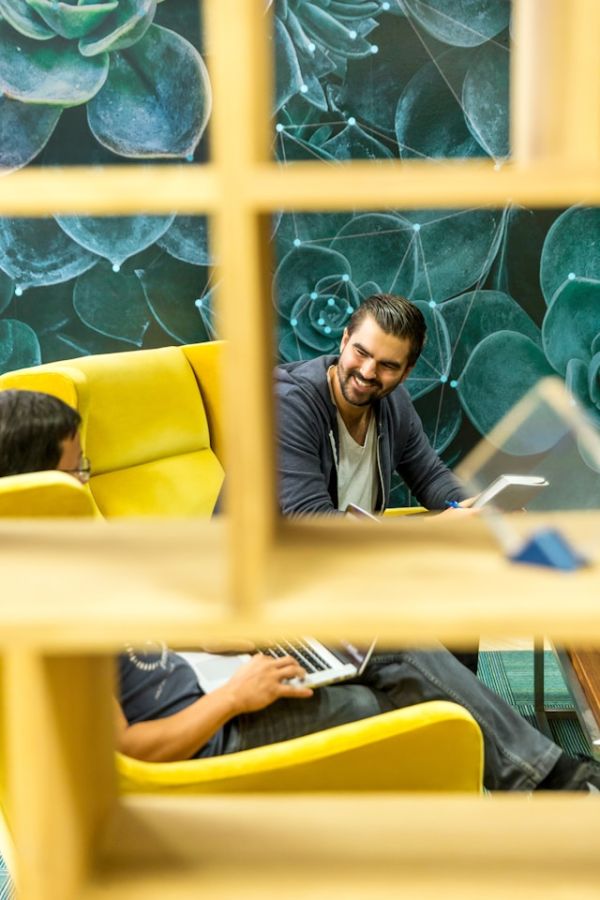According to research, the average American will spend one-third of their life at work. This equates to a grand total of 90,000 hours throughout their lifetime. Given this considerable time investment it only follows that their work environment should be a place where they feel comfortable and at home.
Breaking up the stale monotony of uniform cubicles and standardized setups by introducing elements of personalization such as family photos or children’s paintings, can help to make the workplace a more inviting and enjoyable place for employees. This can lead to greater job satisfaction, higher levels of motivation, and ultimately, greater productivity.
In this article, we will take a closer look at the value that personalization in the workplace can offer to employees and their organizations, by exploring its benefits in various aspects of the work realm.

Increases Comfort and Productivity
Several factors can affect productivity in the workplace. Being in an environment that is free from distractions and offers a conducive setting from which to work is essential. Another important element that influences productivity at work is comfort.
The connection between productivity and comfort has been established with studies such as this one supporting the claim that office comfort can affect productivity. Comfort can be achieved in tangible ways such as the provision of ergonomic furniture tailored to meet the needs of certain employees or personal touches that make the working day a more enjoyable experience.
This might include personal effects such as indoor plants to introduce an element of nature to a workstation and relieve stress or decorative features like artwork to inspire creativity and engender an overall feeling of comfort and well-being at work.
Engenders a Sense of Belonging
Many employers today understand the value of creating an office environment that feels welcoming and collaborative for staff members. This trend has been highlighted in a case study published by the Harvard Business Review, which reports many large employers including Google, Microsoft, IBM and Facebook are investing millions of dollars in redesigning their workspaces by replacing sterile cubicles and standard private offices with larger open-plan spaces.
By encouraging their employees to personalize their workplaces with personal artifacts such as colorful drawings, pictures, and other decorative elements, many of the employers found it helped to foster a greater sense of belonging and place identity.
Organizations can follow this lead by providing their employees with customized design features to personalize their workspace such as kiss cut stickers or customizable desk accessories. In doing so, employers can help to foster a greater sense of cohesion and belonging within their organizations which can improve team dynamics and interpersonal relationships.
Enhances Well-Being
The relationship one has with their work environment can have a significant bearing on their mental and emotional well-being. Several studies have been conducted in this area highlighting the effect that different office layouts can have on employee well-being and performance.
One study published in the Journal of Environmental Psychology examined the relationship between architectural privacy and emotional exhaustion in the workplace. The results found that employees who perceived their work environments to be low on privacy experienced higher levels of emotional exhaustion, compared to employees working in more private settings such as those with opaque or enclosed walls and doors.
Interestingly, the study revealed that personalization of their workspace acted as a moderator for employees, helping to mitigate the negative effects of low levels of experienced privacy on emotional exhaustion. It was noted that personal effects such as children’s artwork, photos, posters and comic strips can help to create a workspace that can contribute to an employee’s positive cognitive and affective states.
This enables them to feel a greater sense of control and ownership over their workspace, helping to counter the adverse effects of a lack of privacy. Personalization can be particularly beneficial for helping employees in open-plan spaces to feel a greater sense of mental and emotional wellbeing at work.
Encourages Self-Expression
Most standardized office templates can leave much to the imagination. Allowing employees to curate a workstation that fosters self-expression and individuality can inspire them to be more creative and innovative at work.
When employees are encouraged to express themselves and their personalities in this way, their employers can also foster a more inclusive work space that recognizes and celebrates each employee’s unique interests and background, helping to create a more supportive and collaborative work culture.
Whether it’s adding vibrant artwork to their walls, placing personal mementos on their work stations or rearranging furniture to suit their workflow, personalization can encourage employees to feel more relaxed in their office environment, allowing them to be their true selves and contribute to their roles in a more authentic and valued way.
With benefits ranging from increased productivity to a greater sense of belonging and emotional wellbeing, the value of personalization extends far beyond the satisfaction it offers to its employees, bringing a number of rewards to the organization as a whole.






Leave A Comment